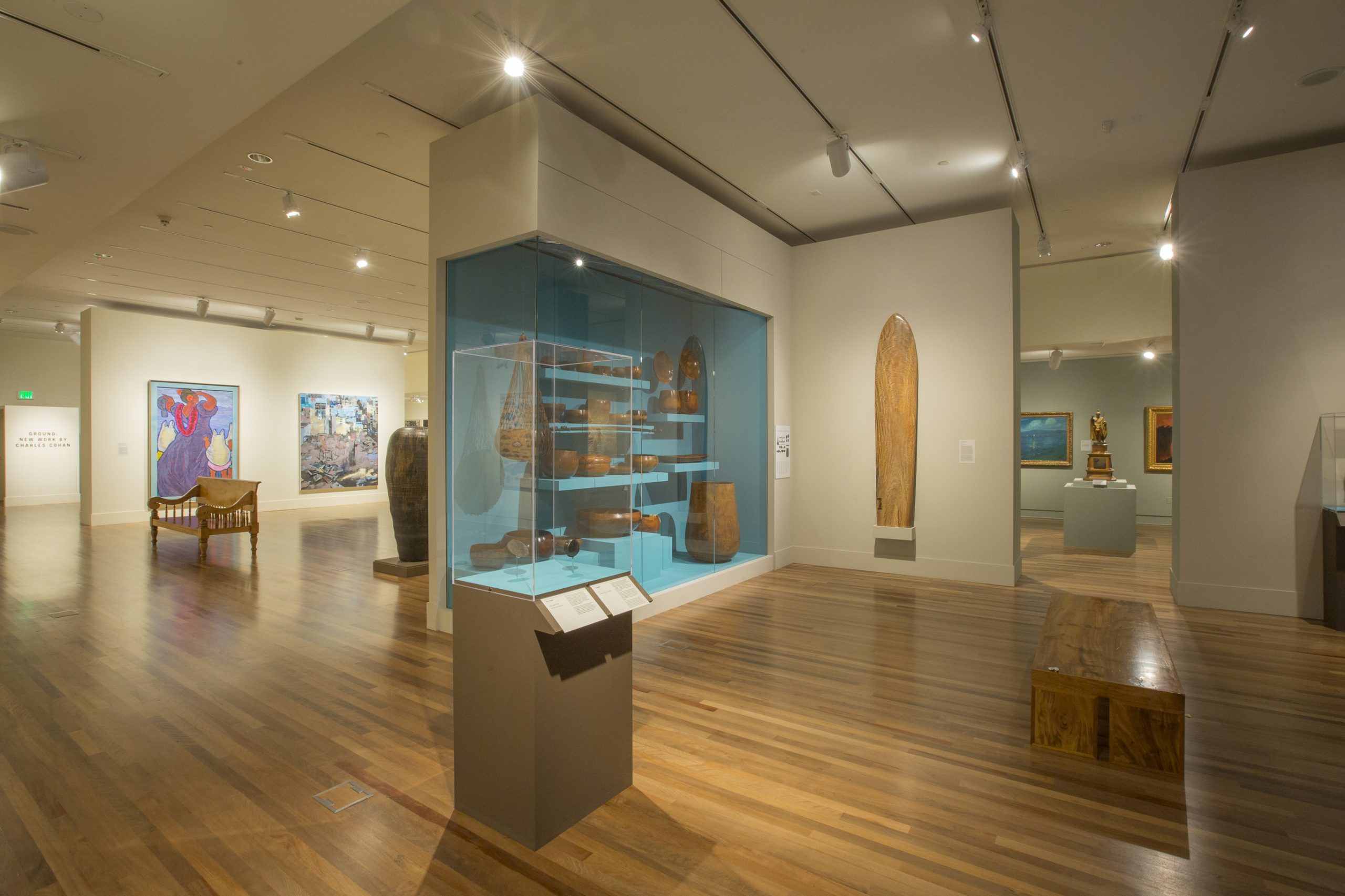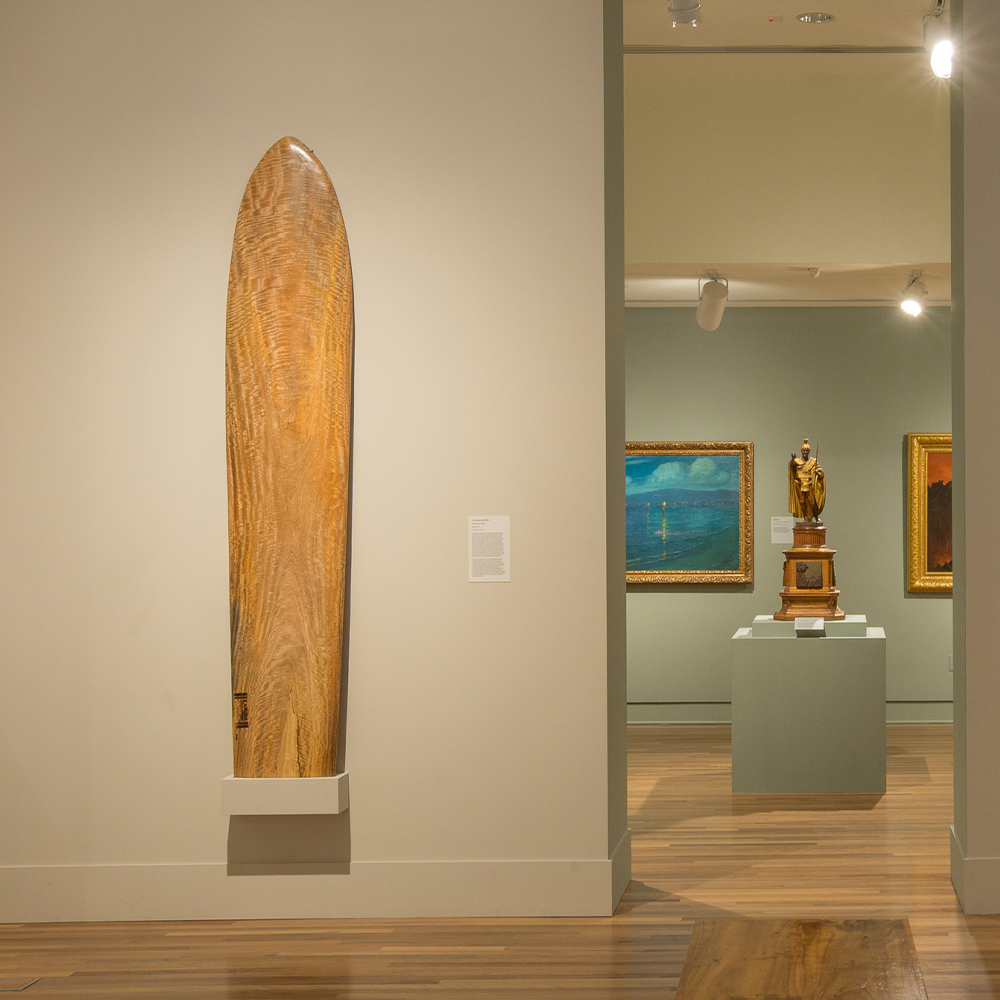Duke Kahanamoku and two surfboards
August 24 is the birthday of actor, ambassador, sheriff, waterman, and Olympic medalist Duke Kahanamoku (1890-1968). Known the world over as a surfer, he demonstrated that the surfboard can be used as a lifesaving device during a capsized ship incident at Corona del Mar, California in 1925. In honor of Duke’s birthday, let’s take a look at two surfboards in the Honolulu Museum of Art’s collection.

Alphonse Pellion
Alphonse Pellion (French, 1796-1868), Habitation du Gouverneur de Kayakakoi (Iles Sandwich), 1819. Pencil on paper. Purchase, 1992 (21491)
In an 1819 pencil drawing by Alphonse Pellion, we see a rare early depiction of a surfboard. Pellion was a member of the crew aboard the ship l’Uranie under the command of Louis de Freycinet. In the drawing we see the “Houses of the Governor of Kaiakekua,” believed to be the compound of the governor of Kaiakekua, the beach area near Kealakekua on the western shore of Hawai‘i Island. There are several structures depicted. The two hale pili (thatched houses) have Western-influenced board doors with latches. The palm-thatched lanai on the right shows a woman, presumably of high rank, working on a sheet of kapa, beating the bark cloth on a wooden anvil with a grooved kapa beater. Also on the lanai is a man, identified as a chief by his mahiole pōheoheo, a distinctive type of woven helmet, and holding an ihe (spear). Parked prominently in the foreground of the drawing is a surfboard at the ready for its user, indicating that the compound is near the ocean.

Holt Gallery
CJ Kanuha’s Kai Pualena on view in HoMA’s John Dominis and Patches Damon Holt Gallery of the Arts of Hawai‘i
Currently on exhibit in the John Dominis and Patches Damon Holt Gallery of the Arts of Hawai‘i is a wooden surfboard made by CJ Kanuha and titled Kai Pualena. The artist is a professional surfer and contemporary board shaper, who bases his board-making process on deep research into the ancient sport of surfing. He involves Hawaiian protocol and contemporary sustainable methods with his creations. This surfboard is shaped from a single plank of solid wood from a fallen mango tree sourced from Hawai‘i Island, where Kanuha lives. Mango is a readily available species that was introduced to Hawai‘i in the early 19th century. This type of surfboard is a kiko‘o, a long board that measures anywhere from eight to 16 feet. Interestingly, the drawing by Alphonse Pellion and the surfboard by CJ Kanuha both come out of the Kona district of Hawai‘i Island.

CJ Kanuha
CJ Kanuha (Hawai‘i, born 1983), Kai Pualena, 2016. Mango wood. Purchase, 2017 (2017-3-01)
-E. Tory Laitila, Curator of Textiles and Fashion